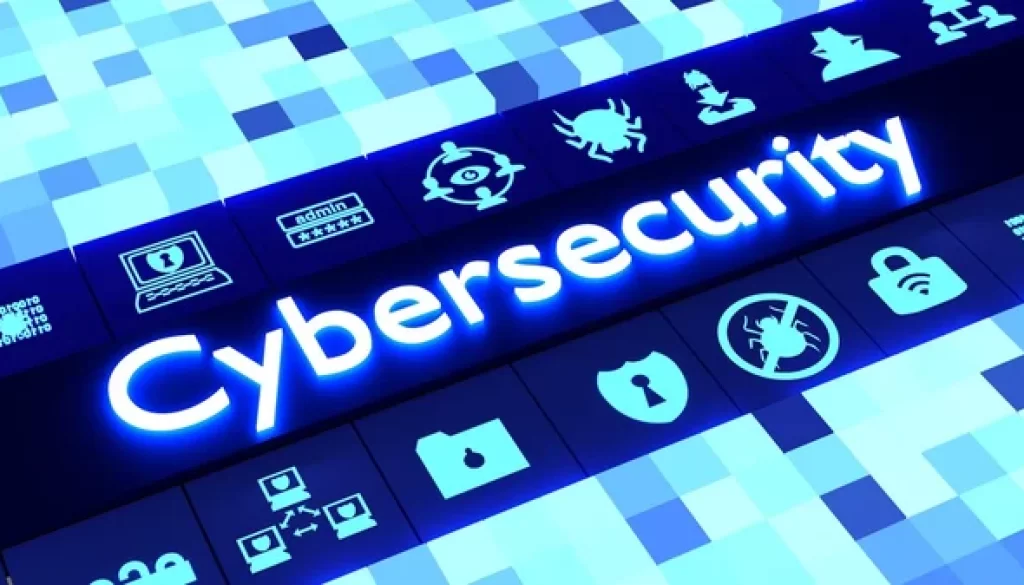What is Cybersecurity? Safeguarding Digital Frontier of Digital World
Unlock cybersecurity’s role in guarding the digital realm. Insights, defenses, and trends empowering digital security.
In our contemporary, hyper-connected world, where technology is deeply interwoven with our existence, the notion of cybersecurity assumes paramount significance. It transcends mere jargon, serving as the digital bulwark fortifying our personal, financial, and even national interests. This exposition delves profoundly into the intricate domain of cybersecurity, underscoring its escalating significance, the taxonomy of cyber perils, the pivotal human factor, and the pivotal constituents of a robust cybersecurity framework.
Furthermore, we shall explore optimal cybersecurity protocols for both individuals and enterprises, prognosticate emerging trends in the year 2023, dissect the legal and ethical dimensions, examine international collaborative endeavors, surmounting ongoing hurdles, and cast an optimistic gaze upon the future prospects of cybersecurity.

Introduction to Cybersecurity
Cybersecurity, at its core, represents the art of fortifying computer systems , networks, and data against theft, malevolent tampering, or illicit ingress. It serves as not merely a digital sentinel but as the guardian of our digitized way of life. As our world advances into a digital epoch, the imperative for cybersecurity has transcended being a mere necessity to become our foremost bastion of protection.
Significance of Cybersecurity
In a milieu where our personal archives, financial transactions, and even medical histories repose within digital repositories, the significance of cybersecurity can hardly be overstated. The digital sphere serves not only as a playground for honest denizens but also as a fertile ground for nefarious actors who prey on vulnerabilities.
Types of Cyber Threats
Cyber threats are akin to chameleons, adept at adapting and mutating to infiltrate our digital defenses. To fathom the gravity of cybersecurity, we must initially identify these adversaries:
- Malware Mayhem: Malicious software, encompassing viruses, Trojans, spyware, and more, infiltrate systems, causing havoc, purloining data, and gaining unauthorized access.
- Phishing Expeditions: Phishing is a beguiling art. Cyber malefactors masquerade as trusted entities, artfully coercing individuals into divulging sensitive information, including passwords and credit card particulars.
- Ransomware Racket: The mere mention of ransomware induces trepidation. It encrypts the files of its victims, extorting ransoms for their liberation. It has wrought havoc upon businesses and organizations, precipitating substantial pecuniary losses.
- Denial-of-Service (DoS) Onslaughts: DoS onslaughts inundate systems with a deluge of traffic, rendering them inaccessible. These attacks disrupt services and can have dire ramifications for both businesses and individuals.

The Human Element in Cybersecurity
While technology undeniably assumes a pivotal role in the realm of cybersecurity, one should not underestimate the human factor. Human fallibility remains a leading instigator of security breaches. Cyber malefactors often exploit human susceptibilities through social engineering stratagems. Consequently, cybersecurity education and awareness form an indispensable facet of our digital bulwark.
Key Components of Effective Cybersecurity Strategy
A comprehensive cybersecurity strategy encompasses several indispensable constituents:
- Risk Scrutiny: Discerning vulnerabilities and potential threats constitutes the bedrock of a robust cybersecurity strategy. Grasping the contours of risks facilitates proactive mitigation.
- Intrusion Surveillance: Continuous vigilance and prompt detection of suspicious activities stand as imperatives. Intrusion detection systems function as vigilant sentinels, issuing alerts upon attempted breaches.
- Incident Remediation: A meticulously delineated incident response blueprint proves pivotal for confining and mitigating the fallout in the event of a cyber onslaught. Swift and efficacious responses can forestall cataclysmic consequences.
- Periodic Updates and Remedies: Ensuring that software and systems remain up-to-date assumes fundamental importance in cybersecurity. Updates frequently encompass critical security remedies addressing known vulnerabilities.
Cybersecurity Best Practices for Individuals
Individuals, too, bear a consequential responsibility in upholding cybersecurity. By adhering to best practices, they can augment their personal digital security:
- Robust, Distinctive Passcodes: Employing intricate, distinctive passcodes for each account constitutes a fundamental step. Passcode management tools can be invaluable in this endeavor.
- Dual-Factor Authentication (2FA): Activating 2FA introduces an additional stratum of security by mandating a second form of verification.
- Routine Software Upgrades: Regularly updating operating systems and applications guarantees the timely installation of indispensable security patches that address known vulnerabilities.
- Prudence Online: Exercising circumspection in disseminating personal information online and abstaining from dubious links and emails can avert falling prey to cyber threats.
The Role of Business in Cybersecurity
Enterprises shoulder a considerable obligation within the realm of cybersecurity. Safeguarding their vested interests and securing their patrons’ data assumes paramount importance. Enterprises should:
- Incorporate Cybersecurity Best Practices: Implementing robust cybersecurity measures encompassing firewalls, encryption, and secure access controls is imperative.
- Conduct Security Audits: Routine security audits can unveil frailties and vulnerabilities demanding immediate rectification.
- Invest in Workforce Training: Adequately trained personnel constitute the vanguard against cyber threats. They should possess the acumen to discern and counter potential hazards effectively.

Cybersecurity Trends in 2023
The domain of cybersecurity is dynamic, ceaselessly evolving. In 2023, we anticipate several noteworthy trajectories that shall sculpt the contours of digital safeguarding:
- Artificial Intelligence-Powered Security Solutions: AI is poised to assume a pivotal role in identifying and mitigating cyber threats in real-time. Machine learning algorithms can dissect copious data, identifying patterns indicative of cyber attacks.
- Zero-Trust Architecture: A zero-trust paradigm entails verifying any entity seeking access to network resources, rendering it arduous for intruders to gain ingress. This seismic shift in network security shall impede unauthorized individuals’ access to critical systems.
- Augmented Collaboration: Collaborative efforts between cybersecurity entities and law enforcement agencies shall be instrumental in efficaciously countering cyber incidents. Such alliances shall foster coordinated responses to cyber threats, ultimately benefiting the digital collective.
The Legal and Ethical Aspects of Cybersecurity
Beyond the technical realm, cybersecurity entails profound legal and ethical ramifications impacting individuals, enterprises, and governments alike. Comprehending these facets assumes pivotal importance in navigating the digital landscape:
- Data Privacy Legislation: Data privacy laws, including the General Data Protection Regulation (GDPR), impose stringent requisites upon organizations regarding the handling of personal data. Non-compliance can precipitate substantial fines and reputational harm.
- Ethical Considerations: Ethical considerations within cybersecurity encompass the ethical disclosure of vulnerabilities and the ethical deployment of cyber capabilities. The ethical hacker community plays a pivotal role in identifying and mitigating security deficiencies.
International Collaboration in Cybersecurity
Cyber threats recognize no geographical boundaries. Effective global cybersecurity solutions necessitate international collaboration. Nations must collaborate, sharing threat intelligence, formulating shared cybersecurity standards, and orchestrating prompt responses to cyber incidents. This collaborative approach is imperative in contending with the increasingly intricate and interconnected digital terrain.
Challenges within the Cybersecurity Landscape
Despite substantial strides in the realm of cybersecurity, challenges endure. Cyber malefactors are growing more sophisticated, broadening their attack surfaces, and uncovering novel vulnerabilities to exploit. Furthermore, the paucity of adept cybersecurity professionals presents a formidable impediment as the demand for expertise in this domain continues to burgeon. Organizations must invest in education and training to bridge this skills deficit effectively.
Future Horizons of Cybersecurity
The horizon of cybersecurity constitutes a paradoxical blend of promise and uncertainty. Swift technological progress shall inevitably usher in an ever-evolving threat landscape. To outpace cyber adversaries, adaptability, innovation, and collaboration shall prove pivotal. The cybersecurity community shall persistently refine its strategies and technologies to safeguard against emergent threats, ensuring a more secure digital future for all.
Conclusion
To conclude, cybersecurity is not a mere buzzword; it serves as our digital citadel. Whether one is an individual intent on safeguarding personal information or an enterprise protecting invaluable assets, cybersecurity must invariably rank as the paramount concern. By remaining apprised, embracing best practices, and embracing emerging technologies, we can confidently navigate the digital panorama, ensuring a safer and more secure future for all.
FAQs (Frequently Asked Questions)
1. What is the significance of cybersecurity in today’s world?
- The article highlights that cybersecurity is crucial in our hyper-connected world to protect personal, financial, and national interests.
2. What are the common types of cyber threats mentioned in the article?
- The article discusses various cyber threats, including malware, phishing attacks, ransomware, and denial-of-service (DoS) attacks.
3. How can individuals improve their cybersecurity practices?
- The article suggests individuals use strong, unique passwords, enable two-factor authentication (2FA), keep software updated, and exercise caution online.
4. What role do businesses play in cybersecurity?
- The article emphasizes that businesses are responsible for protecting their interests and customer data. They should implement robust cybersecurity measures, conduct security audits, and invest in employee training.
5. What are some emerging trends in cybersecurity mentioned for 2023?
- The article anticipates trends like AI-driven security solutions, the adoption of zero-trust architecture, and enhanced collaboration between cybersecurity firms and law enforcement agencies.
6. How do legal and ethical considerations come into play in cybersecurity?
- The article discusses legal aspects such as data privacy laws (e.g., GDPR) and ethical considerations, including responsible vulnerability disclosure and the role of ethical hackers.
7. Why is international cooperation important in cybersecurity?
- The article underscores that cyber threats are global and require collaboration between countries to share threat intelligence, establish common standards, and respond effectively to cyber incidents.
8. What are the challenges facing the cybersecurity landscape?
- The article acknowledges challenges like the increasing sophistication of cybercriminals and the shortage of skilled cybersecurity professionals.
9. How can the future of cybersecurity be described?
- The article describes the future of cybersecurity as a dynamic blend of promise and uncertainty, where adaptability, innovation, and collaboration will be pivotal in safeguarding against emerging threats.
10. Why should cybersecurity be a top priority for everyone, according to the article’s conclusion?
- The article concludes by emphasizing that cybersecurity is not just a buzzword but our digital fortress, and it should be a top priority for individuals and businesses to ensure a safer and more secure digital future for all.
MCQs (Multiple Choice Questions)
1. What is cybersecurity primarily concerned with?
A) Protecting physical assets
B) Protecting digital assets
C) Managing financial assets
D) Enhancing social media presence
Answer: B) Protecting digital assets
2. Which of the following is NOT a common type of cyber threat discussed in the article?
A) Malware
B) Phishing attacks
C) Social media hacking
D) Ransomware
Answer: C) Social media hacking
3. What should individuals do to enhance their personal digital security, according to the article?
A) Share passwords with trusted friends
B) Use simple passwords for easy recall
C) Enable two-factor authentication (2FA)
D) Avoid software updates
Answer: C) Enable two-factor authentication (2FA)
4. What is the role of businesses in cybersecurity, as mentioned in the article?
A) Ignoring cybersecurity as it’s not their concern
B) Outsourcing all cybersecurity responsibilities
C) Protecting their interests and customer data
D) Only conducting security audits
Answer: C) Protecting their interests and customer data
5. Which emerging trend in cybersecurity is highlighted for the year 2023 in the article?
A) Decline in the use of encryption
B) Increased reliance on outdated security methods
C) Artificial Intelligence-Driven Security Solutions
D) Decreased collaboration in the cybersecurity community
Answer: C) Artificial Intelligence-Driven Security Solutions
6. What do data privacy laws, such as GDPR, impose on organizations?
A) Mandatory data sharing with competitors
B) Strict requirements for handling personal data
C) Unlimited data collection rights
D) No legal obligations regarding data
Answer: B) Strict requirements for handling personal data
7. Why is international cooperation important in cybersecurity, as stated in the article?
A) To create more cyber threats
B) To establish cyber monopolies
C) To share threat intelligence and respond to cyber incidents effectively
D) To limit access to the internet
Answer: C) To share threat intelligence and respond to cyber incidents effectively
8. What is one of the challenges mentioned in the article concerning cybersecurity?
A) Decreasing sophistication of cybercriminals
B) Abundance of skilled cybersecurity professionals
C) Increasing availability of cybersecurity tools
D) Shortage of skilled cybersecurity professionals
Answer: D) Shortage of skilled cybersecurity professionals
9. According to the article’s conclusion, what should cybersecurity be for everyone?
A) An occasional concern
B) A buzzword
C) A digital fortress and top priority
D) An outdated concept
Answer: C) A digital fortress and top priority
10. What does the article suggest individuals and businesses do to enhance cybersecurity?
A) Ignore software updates
B) Rely solely on firewalls
C) Embrace emerging technologies
D) Disregard ethical considerations
Answer: C) Embrace emerging technologies
Additional Links
- The Cybersecurity Threat Landscape: Recent Trends and Challenges – An in-depth analysis of recent trends and challenges in the cybersecurity threat landscape.
- The Role of Artificial Intelligence in Cybersecurity – An exploration of how AI is being used to enhance cybersecurity efforts.
- Understanding Data Privacy Laws: GDPR and Beyond – Information about data privacy laws, including the General Data Protection Regulation (GDPR) and its impact on businesses.
- National Cyber Security Centre (NCSC) – The official website of the UK’s National Cyber Security Centre, offering resources and guidance on cybersecurity.



